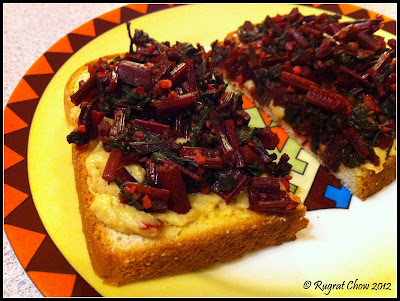.JPG)
While growing up in India, coffee shops like Starbucks and Pete's were unheard of. There were a few old old-timey Oxford-style coffeehouses which were frequented by men and women of my parents generation. Espresso-style coffees were served in restaurants but the Barista-operated coffee shops are a relatively new concept in India. Growing up, we would make this home-made version whenever we felt a yearning for an espresso-based latte. It looked amazingly pretty each time and tasted just as good. Now that I live in the US, and have access to Starbucks :) I rarely make this mix ... except when we're reminiscing about our childhood, or when we're sitting at home on a cold snow-stormy winter day, like today!!!
Prep Time: 10 min
Ingredients:
- 4 tbsp Instant coffee
- 1-2 tbsp Raw Sugar, to taste
- 2-4 tbsp water
- Non-Dairy Milk
Directions:
Add coffee, raw sugar and a couple of tablespoons of water (enough to soak the coffee and make a slurry) to a small plastic cup and using a hand-held blender, whip the mix into a thick foam. If you don't have access to a electric hand-held blender, you can also use elbow grease and mix it with a spoon until the coffee and sugar are well blended together and make a deep brown whipped cream-like mix. If it appears too thick, add a tablespoon or two of water. This mix, because it has no dairy, will stay in the refrigerator for up to 7-10 days.
In a sauce pan, or in the microwave, heat non-dairy milk (I used Vanilla flavored soy milk). Pour steaming hot milk into a cup, add a heaping teaspoon of the mix to the cup (when well whipped, it will immediately float to the top, because of the air mixed into it).
Stir and Serve :)
Stir and Serve :)




.JPG)
.JPG)

.JPG)
.JPG)



.JPG)
.JPG)
.JPG)




.JPG)



.JPG)
.JPG)
.JPG)
.JPG)


.JPG)





.JPG)
.JPG)


.JPG)




.JPG)
.JPG)

